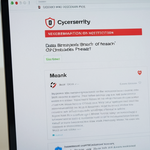
The threat landscape for personal financial information has evolved dramatically as of 2025, with loan and credit scams representing one of the most pervasive and sophisticated categories of fraud targeting consumers across all demographics and income levels. This comprehensive analysis examines the multifaceted nature of loan and credit fraud, the mechanisms by which fraudsters operate, and the proactive strategies that individuals and organizations can employ to protect themselves. At its core, the challenge lies in distinguishing legitimate financial opportunities from elaborate deception schemes, particularly as artificial intelligence and advanced technology increasingly enable fraudsters to create more convincing phishing attempts, synthetic identities, and fraudulent documentation. The stakes have never been higher, with losses from online scams having jumped from under $4 million to over $16 million yearly between 2020 and 2024, fundamentally transforming how consumers approach personal financial security and necessitating a shift from reactive crisis management to proactive, comprehensive monitoring and prevention strategies.
The Landscape of Loan and Credit Scams in 2025
Current Scope and Financial Impact
Loan and credit scams have emerged as one of the most damaging categories of financial fraud in contemporary times, with their prevalence and sophistication increasing at an alarming rate. The Federal Trade Commission documented that consumers lost $12.5 billion to fraud in 2024, with loan fraud and credit-related scams representing a substantial portion of these losses. Unlike traditional forms of fraud that may target a specific subset of the population, loan and credit scams cast a wide net, affecting individuals across age groups, though certain demographics face disproportionate risk. Elderly individuals, those with poor credit histories, and those experiencing financial hardship represent particularly vulnerable populations that scammers actively target with promises of quick cash or credit relief.
The sophisticated nature of modern loan fraud has created an environment where distinguishing between legitimate and fraudulent lenders has become increasingly challenging for the average consumer. Scammers employ multiple delivery channels—phone calls, text messages, emails, social media platforms, dating apps, and fraudulent websites—to initiate contact with potential victims. This multichannel approach dramatically increases the probability that a scammer’s message will reach and resonate with a vulnerable target, as different communication methods appeal to different segments of the population. The integration of artificial intelligence and generative AI into fraudulent operations has further complicated the landscape by enabling the creation of hyper-realistic deepfakes, synthetic identities, and AI-powered phishing scams that can convincingly impersonate legitimate financial institutions.
Characteristics of High-Risk Populations
Understanding which populations face the greatest risk from loan and credit scams is essential for tailoring prevention efforts. People experiencing financial distress, those with limited credit history, and individuals with poor credit scores represent prime targets for advance-fee loan scams and other fraudulent lending schemes. Scammers deliberately target these groups because they understand that legitimate lenders typically deny credit applications from people in these circumstances, making the promise of guaranteed approval or expedited funding particularly appealing. Additionally, older adults, particularly those on fixed incomes and those with accumulated wealth, attract attention from fraudsters who believe these individuals are more likely to comply with authority figures and less likely to question suspicious requests for payment.
The targeting extends beyond age and credit status to encompass employment vulnerability. Individuals seeking employment, particularly those desperate for immediate income, fall victim to job opportunity scams that are designed to steal personal and financial information under the guise of conducting background checks or processing paperwork. Similarly, small business owners facing cash flow challenges represent a secondary market for fraudsters offering small business loans or lines of credit with promises of minimal documentation and rapid funding.
Understanding How Loan and Credit Fraud Operates
Common Loan Fraud Schemes and Tactics
Loan fraud manifests in numerous distinct variations, each employing different psychological manipulation techniques and operational strategies to separate victims from their money or sensitive information. Understanding these variations is crucial for developing effective defenses. Among the most prevalent schemes are advance-fee loan scams, in which fraudsters promise to provide a loan in exchange for an upfront fee, which they claim will be used for processing, insurance, or other legitimate purposes. The fundamental promise of these schemes—that a small payment now will unlock access to a much larger loan—exploits the mathematical logic that resonates with desperate borrowers. Once the initial payment is extracted, fraudsters typically either disappear entirely with the money or invent additional fees that must be paid before the promised funds are released, perpetuating a cycle of financial extraction.
Phantom payday loan scams represent another prevalent variant in which scammers contact individuals claiming they owe money on payday loans that the victims never actually obtained. These schemes exploit the fact that most people cannot instantly verify whether they have taken out a payday loan and rely on aggressive psychological pressure—threats of legal action, wage garnishment, or even arrest—to coerce immediate payment via untraceable methods such as gift cards, wire transfers, or cryptocurrency. The pressure tactics employed in these schemes are deliberately designed to bypass rational decision-making, as scammers make multiple calls per day from different numbers to wear down victims’ resistance.
Upfront payment scams targeting specifically those seeking payday loans create artificial urgency by demanding that borrowers pay processing fees, insurance premiums, or collateral deposits before receiving loan funds. Loan modification scams represent a particularly insidious variation that targets homeowners facing foreclosure or mortgage delinquency, offering to renegotiate loan terms with lenders in exchange for substantial upfront fees. Scammers promise relief from financial hardship but leave victims worse off, having paid thousands in fraudulent fees while their underlying mortgage problems remain unresolved or worsen. The sophisticated nature of these schemes, combined with their targeting of people in genuine crisis, creates a particularly predatory dynamic.
Advanced Tactics: AI, Deepfakes, and Synthetic Identity Fraud
The landscape of loan fraud has undergone a fundamental transformation with the integration of advanced technologies, particularly generative artificial intelligence. More than 50 percent of fraud now involves the use of artificial intelligence, with generative AI enabling the creation of hyper-realistic deepfakes, synthetic identities, and AI-powered phishing scams that can convincingly mimic legitimate communications. Synthetic identity fraud, which accounts for 50 to 70 percent of credit fraud losses, represents the fastest-growing form of credit fraud, with losses exceeding $35 billion in 2023 alone. Unlike traditional identity theft where criminals steal and misuse the identity of real people, synthetic identity fraud involves creating fabricated identities by combining real and fabricated personally identifiable information—potentially using a real Social Security number from a vulnerable individual combined with a completely fictitious name and address.
The process of constructing synthetic identities has become increasingly sophisticated. Fraudsters begin with stolen or manipulated Social Security numbers, which they then combine with genuine or fabricated personally identifiable information such as names, dates of birth, addresses, email addresses, and phone numbers. This fabricated identity is then gradually developed over months or even years, with fraudsters strategically building credit history through authorized user fraud, credit washing, loan stacking, and other techniques designed to make the synthetic identity appear legitimate to credit providers. The fraudsters will apply for multiple loans or credit lines in rapid succession to exploit the lag in reporting systems, obtaining substantial amounts of credit that they subsequently default on, leaving the financial system with losses and potentially damaging the credit of real individuals whose Social Security numbers were used.
Generative AI has supercharged this process by automating the creation of stolen identities and enabling fraudsters to generate realistic supporting documentation. AI can create synthetic parents, educational histories, and employment records to support loan applications. Machine learning algorithms allow fraudsters to learn from their mistakes and continuously refine their approach, becoming increasingly effective at bypassing identity verification systems. Additionally, deepfake technology enables the creation of convincing audio and video recordings of synthetic identities, complete with unique gestures and speech patterns, which can be used to convince real people during verification calls or to authenticate account applications.
The Role of Data Breaches in Enabling Loan Fraud
The foundation enabling much of modern loan and credit fraud is the massive availability of stolen personal data resulting from increasingly frequent and large-scale data breaches. The National Public Data breach exposed 2.9 billion records from 270 million individuals in 2024, possibly constituting the largest data breach ever recorded, with hackers subsequently selling the stolen data for $3.5 million on dark web marketplaces. These massive compilations of personal information serve as raw material for fraudsters constructing both synthetic identities and traditional identity theft schemes. When Social Security numbers, addresses, dates of birth, and employment information are available for bulk purchase on criminal marketplaces, the barrier to entry for committing loan fraud drops dramatically.
The connection between data breaches and loan fraud represents a crucial vulnerability in the current ecosystem. A breach notification letter received by a consumer often represents merely the tip of the iceberg, as additional information frequently becomes public months after the initial breach notification. Businesses typically provide minimal information about breaches to limit legal liability and negative publicity, meaning that consumers may not fully understand the scope of their exposure. This reality underscores the importance of proactive monitoring of credit reports and dark web sources for evidence of personal information exposure, as waiting for official notification often means that fraudsters have already begun exploiting the compromised data.
Breach Monitoring and Proactive Personal Information Checks
How Breach Monitoring Services Operate
Breach monitoring services represent a critical component of proactive personal information protection, functioning as an early warning system against the misuse of compromised data. These services operate through several integrated approaches designed to provide comprehensive visibility into whether and where personal information has been exposed. At the core of most breach monitoring services is dark web scanning, in which sophisticated tools continuously search the hidden sections of the internet where stolen data is most commonly traded. The dark web has become the primary marketplace for cybercriminals looking to monetize stolen personal information, with thousands of sites and millions of data points being constantly scanned for evidence of exposed Social Security numbers, email addresses, phone numbers, credit card information, medical records, and other sensitive data.
The dark web monitoring process works by continuously crawling through hidden websites and databases to identify instances of personal information being offered for sale or shared among criminal networks. Services like Experian’s free dark web scan look back to 2006 and search through over 600,000 pages for evidence of personal information exposure, providing consumers with insights about the scope and nature of their exposure. When a breach monitoring service identifies an individual’s information on the dark web, it provides immediate notification, enabling rapid response before criminals have had extensive time to exploit the compromised data. This early warning capability represents the distinction between a data breach representing a manageable incident and a crisis in which extensive fraudulent activity has already been initiated.
Beyond dark web monitoring, comprehensive breach monitoring services integrate multiple monitoring streams. Identity monitoring tracks usernames, passwords, email addresses, and login credentials across the web, alerting users to suspicious activity that could indicate unauthorized access. Personally identifiable information monitoring focuses specifically on critical data such as Social Security numbers, phone numbers, and financial information, detecting when this sensitive data appears where it shouldn’t. Breach detection capabilities keep consumers informed about new and emerging data breaches that might affect them, while cyber exposure analysis highlights vulnerabilities and recommends steps to fortify defenses. Credit monitoring rounds out the comprehensive approach, tracking changes in credit reports that could signal identity theft or fraudulent account opening.
Advanced Detection Technologies and AI-Powered Systems
Modern breach monitoring and identity protection systems increasingly leverage artificial intelligence and machine learning to provide more sophisticated and proactive detection capabilities. Identity Access Management (IAM) tools now employ AI-driven security platforms that monitor user access patterns and identify anomalies indicating potential security threats. Tenable Identity Exposure, for example, continuously validates Active Directory and Entra ID for weaknesses, misconfigurations, and risky permissions that could be exploited in identity-based attacks. Unlike point-in-time audits that become outdated almost immediately, these continuous monitoring systems provide real-time alerts enabling swift identification and remediation of vulnerabilities.
The integration of behavioral analytics and real-time anomaly detection represents a significant advancement in fraud prevention capabilities. Financial institutions increasingly deploy AI-powered fraud detection systems that can identify deviations from established user behavior patterns with remarkable precision. These systems analyze transaction patterns, device characteristics, location information, and temporal factors to construct a baseline of normal behavior for each user. When activity deviates significantly from this baseline, the system can flag the transaction for manual review or block it entirely, depending on the confidence level of the anomaly detection algorithm. Machine learning models continuously refine themselves based on new fraud patterns, enabling the systems to adapt to evolving criminal tactics more rapidly than traditional rule-based approaches.
The challenge with AI-powered fraud detection, however, lies in balancing security with usability. Overly aggressive detection systems generate excessive false positives, creating friction that frustrates legitimate customers and potentially causes them to abandon transactions or switch to competitors. Financial institutions must carefully tune these systems to identify genuine fraud while minimizing disruption to legitimate customer activities. Additionally, as banks adopt more sophisticated AI systems for fraud detection, so too do criminals, creating an ongoing arms race in which fraudsters continuously develop new tactics designed to evade detection algorithms.

Red Flags and Warning Signs of Loan and Credit Scams
Unsolicited Outreach and Pressure Tactics
The initial point of contact between a scammer and potential victim typically involves unsolicited outreach through one of several communication channels. Receiving an unexpected phone call, text message, email, or social media message offering a loan, promising credit repair, or requesting personal information represents a fundamental warning sign that should trigger heightened skepticism. Legitimate lenders and financial institutions do not initiate contact with offers of instant approval or guaranteed loans, as proper lending practices require thorough evaluation of creditworthiness before any commitments can be made. The phrase “prequalified” or “pre-approved” in an unsolicited loan offer is particularly suspect, as legitimate financial institutions would not make such determinations without a detailed review of the applicant’s credit profile and financial situation.
High-pressure sales tactics represent another reliable indicator of fraudulent activity. Scammers deliberately create artificial urgency to bypass rational decision-making processes, using language such as “act now,” “limited time offer,” or “this opportunity won’t last” to pressure victims into making hasty decisions without proper evaluation. They frequently make repeated calls from different numbers to wear down resistance, and may threaten negative consequences such as legal action, wage garnishment, arrest, or loss of benefits if payment is not made immediately. Scammers often explicitly instruct victims not to discuss the offer with others, recognizing that a second opinion would likely expose the fraud. Some scammers employ psychological manipulation by claiming personal hardship—stating they had to mortgage their house or sell possessions to pay fees on their end—to elicit sympathy and emotional compliance from victims.
Guaranteed Approval and Absence of Legitimate Underwriting
The promise of guaranteed loan approval or approval regardless of credit history represents one of the most reliable red flags indicating fraudulent lending activity. Legitimate lenders are obligated to conduct thorough assessment of a borrower’s creditworthiness before approval, making any guarantee of approval without such evaluation inherently suspect. Legitimate lenders cannot approve loans based on a brief phone conversation; they require documentation of income, employment verification, and detailed credit analysis. Any lender claiming they can approve a loan “over the phone without a credit check” is almost certainly fraudulent.
The absence of legitimate underwriting processes manifests in multiple ways. Scammers typically ask for personal information very early in the process but show little interest in verifying that information or assessing the borrower’s ability to repay. They demonstrate a clear lack of emphasis on identity verification or credit history assessment, relying instead on social engineering and psychological pressure. Legitimate lenders, by contrast, will request documentation such as pay stubs, tax returns, bank statements, and employment verification letters. They will pull credit reports and conduct thorough financial analysis. Any lender who circumvents these standard processes is operating outside normal lending practices and should be considered suspect.
Payment Request Red Flags
Requests for payment represent critical junctures at which fraudulent lending schemes reveal themselves. Legitimate lenders never charge upfront fees before disbursing loan funds. Any demand for payment before the loan money is received represents a fundamental red flag. Scammers attempt to justify these upfront payments using terminology such as “processing fees,” “insurance fees,” “administrative fees,” “loan origination fees,” or “credit verification fees,” but legitimate lenders subtract any applicable fees from the approved loan amount rather than demanding payment before funding. Some scammers claim they need the borrower’s first and last months’ payments or a percentage of the loan principal upfront, but legitimate lenders collect payments only after the loan has been funded and the borrower has had an opportunity to use the money.
The specific payment methods requested by fraudsters are deliberately chosen to be irreversible or difficult to trace. Wire transfers through Western Union, MoneyGram, or international wire transfer services are ideal from the scammer’s perspective because they cannot be cancelled or reversed once sent, and the recipient cannot be easily traced. Payment apps like Zelle, Venmo, or similar services offer some level of irreversibility. Gift cards represent another preferred payment method because once purchased, the balance cannot be recovered. Cryptocurrency payments are virtually impossible to reverse. Cash sent by mail is similarly irrecoverable. Legitimate lenders, by contrast, will accept payment through traceable, reversible methods such as bank transfers, checks, or credit cards, and will have established procedures for handling payment disputes.
Protective Strategies and Tools
Credit Freezes and Fraud Alerts
Among the most effective protective measures available to consumers are credit freezes and fraud alerts, which leverage the cooperation of the three major credit reporting agencies—Equifax, Experian, and TransUnion—to restrict access to credit information or require additional verification before extending credit. A credit freeze places a security hold on a consumer’s credit file, preventing creditors and other third parties from accessing the credit report without explicit authorization from the consumer. When a credit freeze is in place, no one can open a new credit account in the consumer’s name, including the consumer themselves, without first contacting the credit bureau to temporarily lift the freeze. This serves as a highly effective barrier against synthetic identity fraud and fraudulent account opening, as fraudsters cannot obtain credit without passing the credit check that the credit freeze blocks.
The cost of placing or lifting a credit freeze is zero—the service is provided for free by the three major credit reporting agencies—and a credit freeze does not negatively impact credit scores. This makes credit freezes a particularly valuable protective tool with minimal downside. Any person can place a credit freeze at any time, regardless of whether their information has been exposed in a breach or compromised by identity theft. The freeze lasts indefinitely until the consumer chooses to lift it, either permanently or temporarily for a specific time period to allow a legitimate credit inquiry.
Fraud alerts represent a complementary protective measure that does not completely prevent credit access but instead requires that creditors verify identity before extending credit in a consumer’s name. There are three types of fraud alerts: initial fraud alerts, extended fraud alerts, and active duty alerts for military service members. An initial fraud alert, which any consumer can place if they suspect they may be a victim of fraud, lasts for one year and requires businesses to take reasonable steps to verify the identity of anyone attempting to open a new account in the consumer’s name. An extended fraud alert, which requires an active police report or FTC identity theft report, lasts for seven years and provides more robust protections, requiring verification by the consumer’s specified contact method or in person before new credit is extended. Like credit freezes, fraud alerts are free to place and can be renewed when they expire.
Proactive Monitoring Services and Credit Monitoring
Comprehensive identity theft protection services have evolved to offer layered protection against the sophisticated fraud techniques employed in 2025. These services typically combine credit monitoring, dark web monitoring, identity monitoring, and recovery support into integrated packages designed to provide both early warning of fraud and comprehensive assistance in recovery if fraud does occur. Premium identity theft protection services offer up to $1 million in identity theft insurance coverage, covering expenses such as legal fees, lost wages, and restoration expenses incurred as a result of identity theft.
Free credit monitoring services are also available from credit bureaus and other financial institutions, though these typically offer monitoring of only one bureau rather than all three major bureaus. The Federal Trade Commission provides free annual credit reports from each of the three bureaus through AnnualCreditReport.com, enabling consumers to check for suspicious account opening or fraudulent activity themselves. Many financial institutions now offer free credit monitoring as a standard service to account holders, adding an extra layer of visibility into credit activity.
The distinction between credit monitoring and comprehensive identity theft protection is important. Credit monitoring focuses specifically on monitoring credit reports and alerting consumers when new accounts are opened, credit inquiries are made, or changes occur to existing accounts. Identity theft protection services cast a wider net, monitoring not only credit reports but also bank accounts, dark web sources, criminal databases, social media accounts, and other locations where stolen personal information might be exploited. For comprehensive protection against the full spectrum of modern fraud, identity theft protection services represent a more robust solution than credit monitoring alone, though they come with monthly fees.
Recovery and Insurance Options
Despite best efforts at prevention, some individuals will still fall victim to loan and credit fraud, necessitating effective recovery protocols and insurance coverage. Identity theft insurance has emerged as an important financial tool for managing the costs and recovery processes associated with identity theft and fraud. These policies typically reimburse covered expenses such as credit report copies, notary fees, bank fees, lost wages from work spent restoring identity, childcare costs, and legal fees. More comprehensive policies may also cover the cost of credit monitoring services, connection to fraud specialists for restoration services, and even reimbursement for stolen funds in some cases.
Identity theft insurance generally costs between $20 and $60 per year as an add-on to homeowners, renters, or other insurance policies, though more comprehensive coverage may cost more. The key consideration in evaluating identity theft insurance is understanding exactly what the policy covers, as exclusions and coverage limits vary significantly between providers. Many insurance policies will not cover money actually stolen from accounts but will instead reimburse expenses incurred in the process of restoring identity and disputing fraudulent charges.
The Federal Trade Commission provides a free Identity Theft Report that can be filed at IdentityTheft.gov, which enables access to step-by-step recovery guidance tailored to the specific types of fraud experienced. This government resource includes instructions for contacting credit bureaus, disputing fraudulent accounts, placing fraud alerts, and recovering from specific types of identity theft such as tax fraud or benefit theft. Additionally, many financial institutions provide identity theft recovery support directly to account holders when fraud is discovered, assigning dedicated fraud specialists to help restore accounts and resolve disputed transactions.
Detection Technologies and AI-Powered Solutions
Financial Institution Approaches to Fraud Detection
Major financial institutions and government-sponsored enterprises have invested heavily in sophisticated fraud detection technologies designed to identify suspicious activity before it results in financial loss. Fannie Mae, which manages or guarantees an estimated one in four single-family mortgages in the United States, launched an AI-powered Crime Detection Unit in partnership with Palantir Technologies specifically designed to detect and prevent mortgage fraud with unprecedented precision. This partnership demonstrates the recognition that traditional rule-based fraud detection systems are no longer sufficient to combat increasingly sophisticated schemes, requiring AI and machine learning approaches that can identify subtle patterns across millions of data points in real time.
The platform developed through this partnership analyzes vast datasets to detect anomalous transaction patterns, unusual behaviors, and suspicious activities that might otherwise go undetected by traditional monitoring systems. By integrating deep identity context into exposure management platforms, these systems can identify toxic combinations of data points that individually might appear legitimate but collectively indicate fraud. The technology attempts to eliminate attack paths that fraudsters might exploit, making it more difficult for bad actors to find a foothold in the system or to conduct lateral movement once they gain initial access.
Banks and financial institutions increasingly employ behavioral biometrics and device intelligence alongside traditional fraud detection methods. These advanced tools assess not only what transactions are happening but also how users are interacting with their accounts, identifying deviations from established patterns that might indicate account compromise or unauthorized access. Real-time anomaly detection systems can flag suspicious login patterns, unusual geographic locations, unfamiliar devices, or behavioral changes that warrant additional verification before allowing high-risk transactions to proceed.

Collaborative Intelligence and Cross-Institutional Sharing
One of the most significant developments in fraud prevention is the move toward collaborative intelligence sharing between financial institutions, government agencies, and law enforcement. The Financial Services Information Sharing and Analysis Center (FS-ISAC) and other industry collaboratives enable real-time sharing of threat intelligence about emerging fraud tactics, compromised credentials, and suspicious accounts. This collaborative approach recognizes that fraud is a systemic problem affecting the entire financial system, and that institutions protecting their own customers most effectively when they share information about threats with other institutions.
Threat intelligence specifically focused on payments fraud has emerged as a critical tool for early fraud detection. Rather than waiting for fraud to occur and then detecting it, advanced threat intelligence can identify emerging tactics, compromised payment card data, and suspicious merchant activities before they result in fraud losses. For example, intelligence about increasing abuse of tester Merchant Identification Numbers (MIDs) for card-testing fraud allows institutions to proactively monitor at-risk cards and implement additional verification for transactions from suspicious merchants before fraud occurs.
The integration of cybersecurity and fraud prevention teams represents an important structural development that reflects the recognition that most fraud begins with a cyber vulnerability or compromise. When cybersecurity teams identify a data breach or unauthorized access to a system, that information is immediately shared with fraud prevention teams, enabling rapid implementation of protective measures before fraudsters have had extensive time to exploit the stolen data. This breaking down of silos between traditionally separate security functions enables earlier detection and faster response to emerging threats.
Response and Recovery Protocols
Immediate Actions Upon Discovering Fraud
When individuals discover evidence of loan fraud, credit fraud, or identity theft, the immediate actions taken in the first hours and days significantly impact recovery outcomes. The first critical step involves contacting the Federal Trade Commission through IdentityTheft.gov or by calling 1-877-438-4338 to file an official identity theft report. This report provides access to the government’s comprehensive recovery guidance and enables consumers to work through step-by-step instructions specific to their situation. The information provided in the identity theft report to the FTC is also used to build cases against scammers and to spot trends that help educate the public.
Simultaneously, consumers should contact the fraud departments at their credit card issuers, banks, and any other financial institutions where suspicious activity is detected. If money was transferred out of an account without authorization, the account holder should contact their bank immediately to report an unauthorized debit or withdrawal and request reversal of the transaction. If a wire transfer was sent through Western Union, MoneyGram, or a similar service, the consumer should immediately contact that service to report the fraud, though recovery is unlikely if the funds have already been picked up. If a money transfer app was used, the transaction should be reported to the company behind the app, and if a credit card or debit card was linked to the app, the card issuer should be notified of the fraud.
For loan fraud specifically, consumers should notify both the purported lender and the actual lending institutions where fraudulent loans were opened. A police report should be filed documenting the fraud, as this report is often required for fraud alerts and other protective measures. The formal documentation created through official reporting channels becomes essential evidence for disputing fraudulent accounts and accessing recovery assistance.
Dispute Processes and Credit Restoration
Once fraud has been reported to appropriate authorities, the process of restoring credit and disputing fraudulent accounts begins. Consumers have the right to dispute inaccurate or fraudulent information appearing on their credit reports, and the three major credit reporting agencies are obligated to investigate disputed items. The dispute process involves submitting written notification to the credit bureau identifying specific accounts or transactions that are fraudulent and requesting removal or correction.
For fraudulent accounts opened in a consumer’s name, the process involves notifying both the credit bureau and the fraudulent creditor that the account was opened without authorization. The creditor is then obligated to investigate and determine whether to accept the identity theft affidavit or request additional documentation before removing the account from the consumer’s credit report. The Federal Trade Commission provides an Identity Theft Affidavit form that can be used in this process, though many creditors will also accept law enforcement reports or other official identity theft documentation.
Throughout the dispute and restoration process, consumers may encounter resistance from creditors or credit bureaus that are reluctant to remove fraudulent accounts immediately. Understanding consumer rights under the Fair Credit Reporting Act and other relevant statutes is important for navigating these disputes effectively. Some consumers find it helpful to work with identity restoration specialists or attorneys who specialize in fraud recovery, though the government provides free guidance through IdentityTheft.gov for consumers who prefer to handle restoration independently.
Long-Term Monitoring and Vigilance
Recovery from loan and credit fraud is not instantaneous and requires extended monitoring and vigilance to ensure that additional fraudulent activity does not occur. Continuing to monitor credit reports monthly or quarterly enables detection of any new fraudulent accounts that fraudsters may attempt to open after the initial discovery of fraud. Many fraudsters attempt to exploit the same compromised identity multiple times, banking on the hope that victims may let their guard down after recovering from initial fraud.
Ongoing use of credit freezes and fraud alerts, combined with continued monitoring of dark web sources for evidence of whether personal information remains in criminal circulation, provides ongoing protection against reactivation of the stolen identity. Some individuals who have been victims of loan fraud or identity theft choose to maintain permanent credit freezes and extended fraud alerts indefinitely rather than allowing them to expire, accepting the minor inconvenience of temporarily lifting the freeze when they themselves need to apply for legitimate credit in exchange for the ongoing security this provides.
Regulatory Framework and Reporting Mechanisms
Federal and State Regulatory Environment
The regulatory framework addressing identity theft, data breaches, and loan fraud spans multiple federal agencies and numerous state jurisdictions, creating a complex environment that reflects the patchwork nature of current consumer protection law. The Federal Trade Commission enforces the Fair Credit Reporting Act and maintains primary responsibility for consumer fraud complaints, maintaining the IdentityTheft.gov resource and accepting fraud reports that inform investigation and prosecution efforts. The Consumer Financial Protection Bureau, which has experienced recent budget constraints that may limit enforcement capacity, provides guidance on credit freezes, fraud alerts, and other consumer protections under its authority.
The Gramm-Leach-Bliley Act, the Fair Credit Reporting Act, and the Federal Trade Commission Act establish baseline requirements for companies to provide reasonable security for sensitive personal information and to notify consumers when their information is compromised. However, breach notification requirements vary from industry to industry and state to state, with some states imposing more stringent requirements than others. This variation creates compliance complexity for national companies and can leave consumers in states with weaker notification requirements with less information about breaches affecting them.
The problem of inadequate data protection has prompted academic and policy analysis recommending stronger federal legislation to establish minimum data security standards, regulate the collection and storage of personal information, and expand enforcement mechanisms beyond the current framework. The current reliance on state-by-state regulation creates loopholes that sophisticated fraudsters can exploit, and the limited enforcement capacity of regulatory agencies means that many fraudsters operate with relative impunity despite causing substantial harm to consumers.
Reporting and Investigation Resources
Multiple government agencies accept reports of loan fraud, credit fraud, and related financial crimes, each maintaining specialized investigation and prosecution capacity. The Federal Trade Commission’s Complaint Assistant (ReportFraud.ftc.gov) enables citizens to report fraud, scams, and bad business practices, with particular capacity to investigate mass-marketing fraud and common scam patterns. The Internet Crime Complaint Center (IC3), a partnership between the FBI, Secret Service, and National White Collar Crime Center, serves as the central repository for complaints about internet-related crimes and refers complaints to relevant law enforcement agencies for investigation.
The Small Business Administration provides resources for reporting fraud, waste, and abuse in SBA programs, with particular emphasis on loan fraud and identity theft related to pandemic relief programs. State attorneys general offices maintain fraud reporting hotlines and investigate fraud complaints filed by residents. For specific categories of fraud, specialized reporting mechanisms exist—for example, mortgage fraud can be reported to the Federal Housing Finance Agency’s Office of Inspector General, while student loan fraud can be reported to the Department of Education’s Office of Inspector General.
The key challenge in fraud reporting is that reported fraud often goes unprosecuted due to resource limitations and jurisdictional complexity. Many fraudsters operate across state lines or from foreign countries, creating attribution and prosecution challenges that often exceed the resources available to law enforcement agencies. Despite these limitations, reporting fraud remains important as it contributes to law enforcement’s understanding of emerging fraud trends and can generate intelligence useful for pursuing major fraud operations affecting large numbers of consumers.
Maintaining Your Vigilance
Synthesis of Key Findings and Strategic Recommendations
The challenge of protecting personal financial information and guarding against loan and credit scams in 2025 requires a multifaceted approach that combines individual vigilance, proactive monitoring technologies, institutional safeguards, and regulatory oversight. Loan and credit fraud has evolved into a sophisticated, technology-enabled ecosystem in which fraudsters employ artificial intelligence, synthetic identity construction, and advanced social engineering to overcome traditional security measures. The integration of generative AI into fraud operations has created an environment in which hyper-realistic phishing attempts, convincing deepfakes, and automated identity fabrication represent the new baseline of fraud capabilities rather than exceptional threats.
For consumers, the most effective protective approach involves implementing multiple overlapping layers of protection rather than relying on any single strategy. Beginning with a credit freeze, which provides the most fundamental protection against unauthorized account opening, represents an essential first step that should not wait for evidence of compromise. Supplementing this baseline protection with regular credit report monitoring—either through free annual reports from each bureau or through paid monitoring services—enables early detection of fraudulent accounts should they successfully circumvent the credit freeze. Subscribing to comprehensive identity theft protection services that integrate dark web monitoring, identity monitoring, fraud alert capabilities, and recovery assistance provides insurance against the broader spectrum of fraud threats beyond what credit monitoring alone can address.
From an individual behavior perspective, vigilance in response to unsolicited outreach remains paramount. The principles distinguishing legitimate financial offers from fraudulent schemes have remained consistent despite technological advances in fraud execution: legitimate lenders do not contact unsolicited borrowers, do not promise guaranteed approval, do not charge upfront fees, and do not create artificial urgency demanding immediate action. Any offer violating these principles warrants skepticism and investigation before proceeding. Recognizing that pressure tactics, lack of standard underwriting procedures, and unusual payment requests represent red flags that should trigger disengagement from any potential transaction can prevent the vast majority of loan fraud victimization.
Financial institutions must continue investing in sophisticated fraud detection technologies that move beyond reactive post-incident detection to proactive identification of anomalies and emerging threat patterns. The integration of cybersecurity and fraud prevention functions, combined with cross-institutional intelligence sharing, enables more rapid response to emerging fraud techniques before they can be exploited at scale. As fraudsters continue to advance their capabilities through adoption of AI and other sophisticated technologies, financial institutions cannot remain static in their defensive posture but must continuously evolve detection methodologies and capabilities to maintain effectiveness.
Future Considerations and Emerging Challenges
The trajectory of loan and credit fraud suggests that emerging challenges will continue to outpace protective responses, particularly as artificial intelligence capabilities continue to advance. The application of generative AI to fraud operations represents a qualitative shift from previous fraud eras, enabling automation and scale that vastly exceeds what human-operated fraud schemes could achieve. As AI capabilities continue to improve, the challenge of distinguishing legitimate from fraudulent communications, applications, and entities will only become more difficult. Policymakers, regulators, and industry participants must grapple with fundamental questions about how to enable beneficial AI applications while preventing the weaponization of the same technologies for fraud and financial crime.
The current regulatory framework, which relies on a patchwork of state laws and limited federal oversight with constrained enforcement resources, appears fundamentally inadequate to address systemic fraud threats that operate across jurisdictions and technologies. Stronger federal data protection legislation, establishing minimum security standards and expanding enforcement mechanisms, represents a potential response to this regulatory gap, though such legislation remains absent despite years of recommendations from policy analysts. The emergence of blockchain and distributed ledger technologies as potential alternatives to centralized identity systems represents another frontier in the identity security landscape, offering the possibility of giving consumers greater control over personal information while reducing the concentration of valuable identity data in databases that attract fraudsters.
The human dimension of fraud prevention remains irreducible despite technological advances. Even the most sophisticated fraud detection systems require human judgment to interpret alerts, investigate suspicious activity, and determine whether transactions are genuinely fraudulent or legitimate. As fraud becomes more sophisticated and detection systems become more complex, the expertise and training requirements for fraud prevention personnel increase correspondingly. Financial institutions and technology companies will need to invest in developing the human expertise necessary to operate, interpret, and respond to increasingly sophisticated automated systems.
The individuals most vulnerable to loan and credit fraud—those experiencing financial distress, the elderly, those with limited financial literacy—often lack access to the most sophisticated protective tools and services available, as many premium identity theft protection services require monthly subscriptions beyond the budgets of the most economically vulnerable populations. Addressing this equity dimension of fraud protection represents both a moral imperative and a practical necessity, as vulnerable populations bear a disproportionate share of fraud losses while having the fewest resources to recover.
In conclusion, guarding against loan and credit scams in 2025 requires recognition that protection is not a one-time implementation but an ongoing process of monitoring, adaptation, and vigilance. The sophistication of modern fraud schemes, amplified by artificial intelligence and advanced technology, demands correspondingly sophisticated protective responses. Individual consumers must combine personal vigilance with engagement with professional protection services and maintain awareness of emerging threat patterns. Financial institutions must invest in advanced detection technologies and collaborative intelligence sharing. Policymakers must address regulatory gaps that enable systemic fraud. Only through this comprehensive, multilayered approach can meaningful protection be achieved against the evolving threat landscape of contemporary loan and credit fraud.
Protect Your Digital Life with Activate Security
Get 14 powerful security tools in one comprehensive suite. VPN, antivirus, password manager, dark web monitoring, and more.
Get Protected Now





